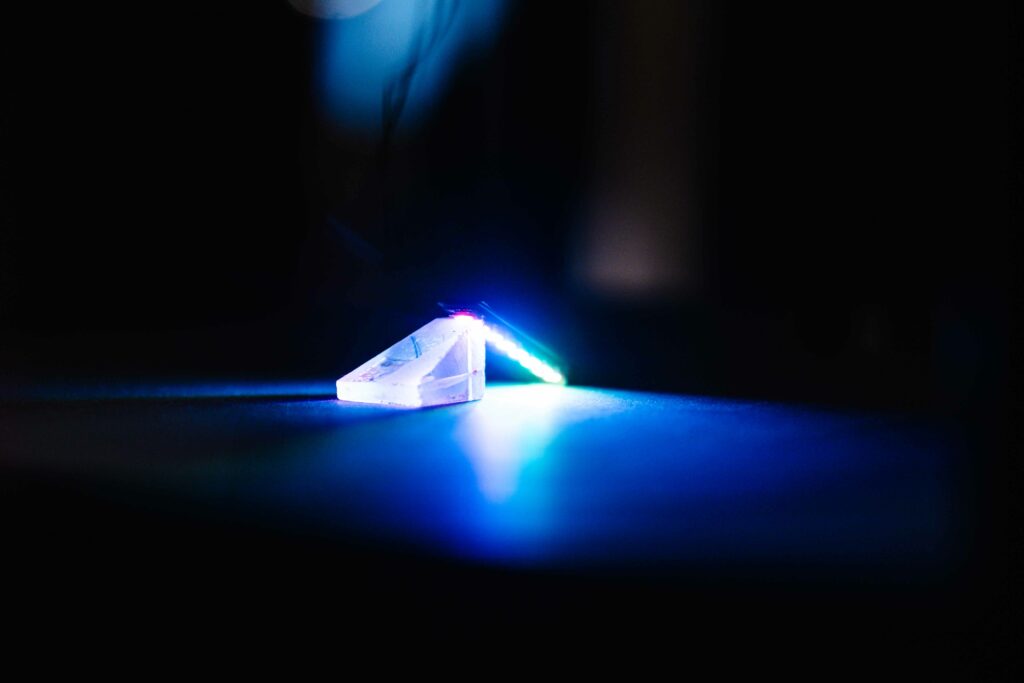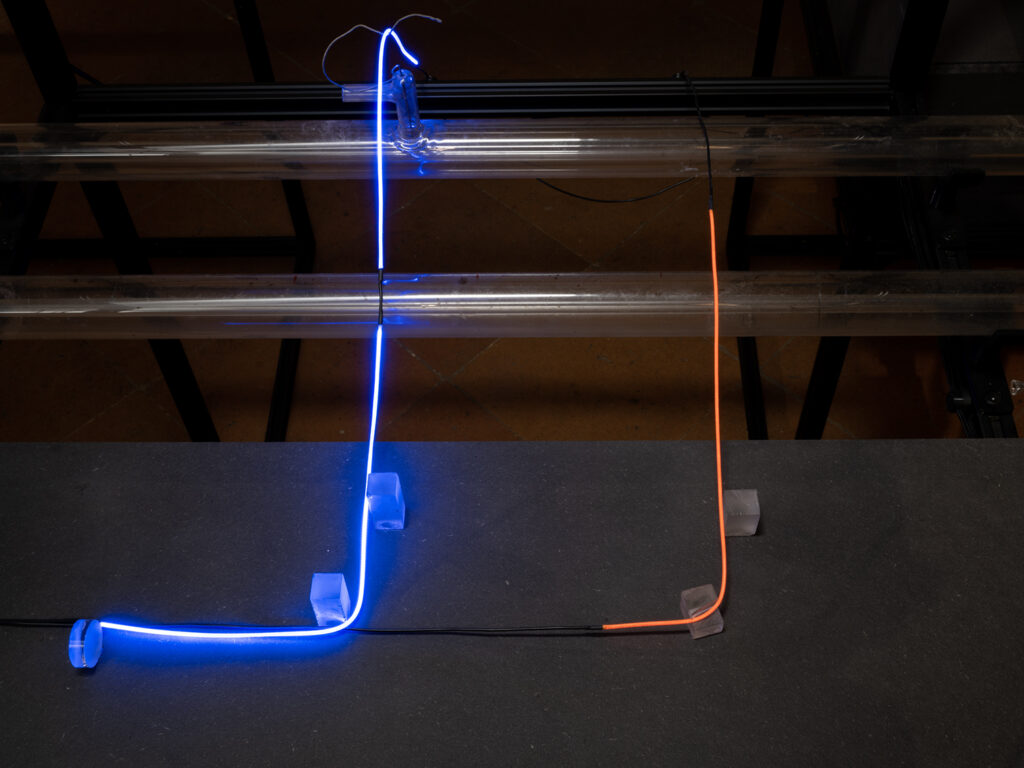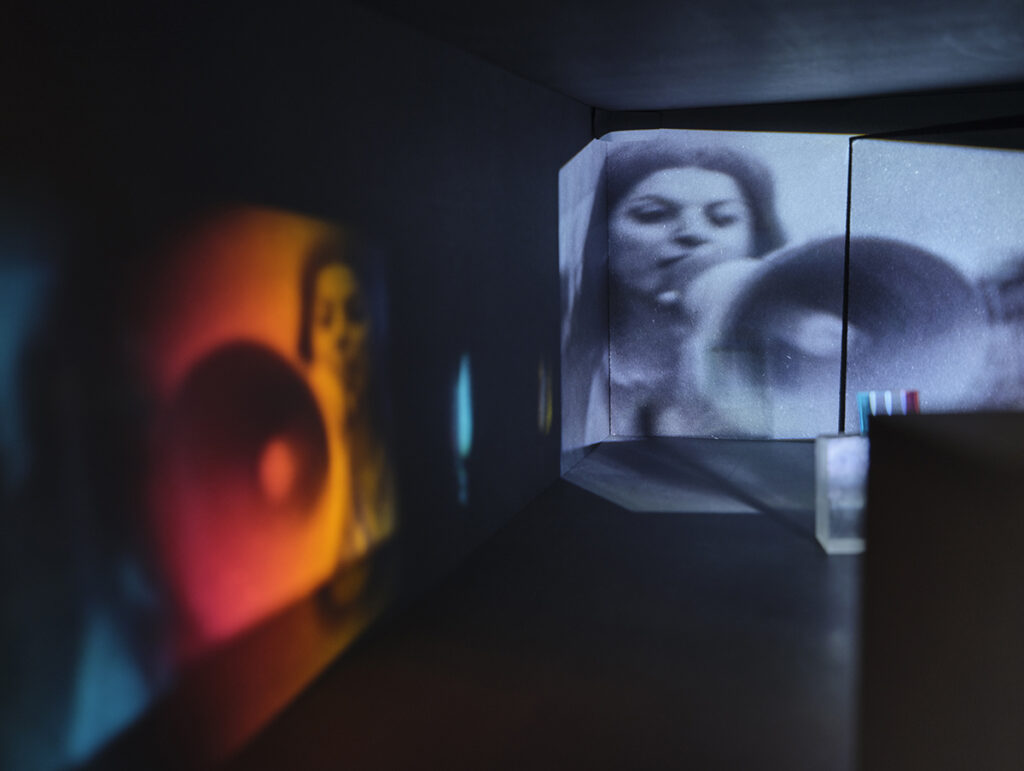An entangled time machine

An entangled time machine, multimedia installation, 2023
In an era fraught with ecological, social, and political upheaval, the concept of time becomes precarious, prompting us to reevaluate its significance. Karen Barad’s philosophical research encourages an examination of how quantum physics has reshaped our understanding of time.
Embarking on a collaborative journey alongside physicists Nicola Poli, Valentina Parigi, Riccardo Sapienza, and Caterina Foti, I ventured into the research laboratories of LENS in Florence and Kastler Brossel in Paris, seeking to unravel the implications of quantum physics on our conception of time.
This exploration birthed two ‘time machines,’ not in the conventional sense of linear time travel but as symbolic embodiments of time as relational. Inspired by the complex experiments conducted in these laboratories, these machines challenge the traditional notion of a fixed, universal time, instead evoking the complex concepts of quantum correlations, superposition, and entanglement.
The project finds its home in Villa Galileo, perched on Arcetri hill in Florence, where Galileo Galilei once resided under house arrest for his “heretical” views. This historic setting serves as a fitting backdrop for grappling with radical questions at the intersection of science, society, and politics.

Every single vibration
electronic devices, led matrix, flexible led filaments, glass laser tubes, volcanic rocks, glass lenses, mechanic clock mechanism, mud, bacteria, chicken wire, speakers, sensors, color photograph, celestine crystal, strontium aluminate paint, aluminum profiles, black MDF wood. 100 x 180 x 130 cm.
Every single vibration, inspired by the optical atomic clock developed at the Lens laboratory, incorporates various oscillations from natural and cultural systems. These include historical measurement tools like a volcanic rock pendulum and a sundial made of porcupine bristles, as well as biological rhythms such as those of geobacter bacterial colonies. Visitors activate the machine through their heartbeat, which synchronizes with the flow of Alice Munro’s short story “The Moons of Jupiter” on an LED matrix. Other rhythms, like a leaf swaying in the wind, are captured by an accelerometer, connecting diverse vibrations to the concept of time and matter interaction.

Radical experiments in correlation
electronic devices, liquid crystal valve, glass pieces, colored wires, silver rings, vibe motors, led matrices, video projector, beam splitters, aluminum profiles, black MDF wood. 50 x 400 x 150 cm
This machine draws inspiration from key concepts of quantum physics like superposition and entanglement, which defy classical physics principles, and their connection to time. The first part recreates a recent experiment by Riccardo Sapienza’s team, simulating the double slit in the time domain with a minimalist setup. Multicolored light and oscillating wires represent interference patterns in the frequency domain. The second part reflects Valentina Parigi’s experiments in Paris with nonlinear crystals to generate entangled states of light. Vibrating rings on colored strings symbolize entangled photons, leading to a miniature cinema showing a video from the AAMOD archive, where black and white images are diffracted into colors via beam splitters, symbolizing quantum correlation in time. This video choice signifies our collective effort to reshape time and history, fostering interconnectedness and our shared responsibility towards the future.
An entangled time machine was conceived and realised for the tenth edition of the art and science festival La Science de L’art, organized by the Collectif pour la Culture en Essonne in Sainte-Geneviève-des-Bois, France, in collaboration with the Grasping the Cosmos project, coordinated by Villa Galileo (Museum System of the University of Florence) and the GGI – Galileo Galilei Institute for Theoretical Physics, Florence. An entangled time machine also became the title of Tina Salvadori Paz’s solo exhibition, curated by Valeria D’Ambrosio, hosted at Villa Galileo in Florence in November 2023.
Photo credits for the project: Giulia Lenzi, Andrea Abati, Luca Sguanci
More on Grasping the cosmos
